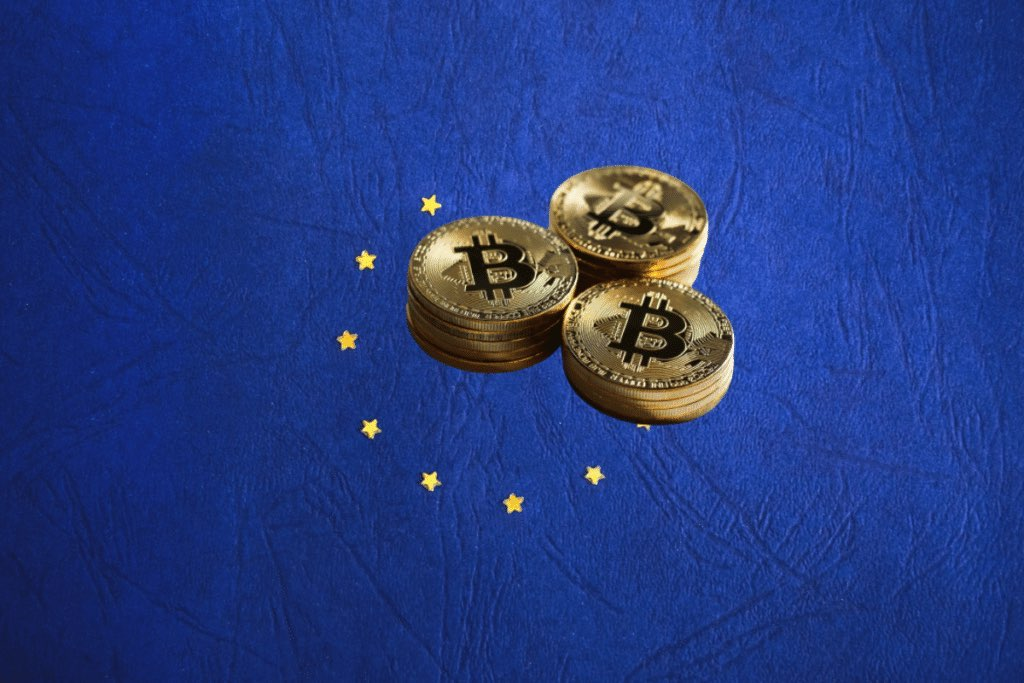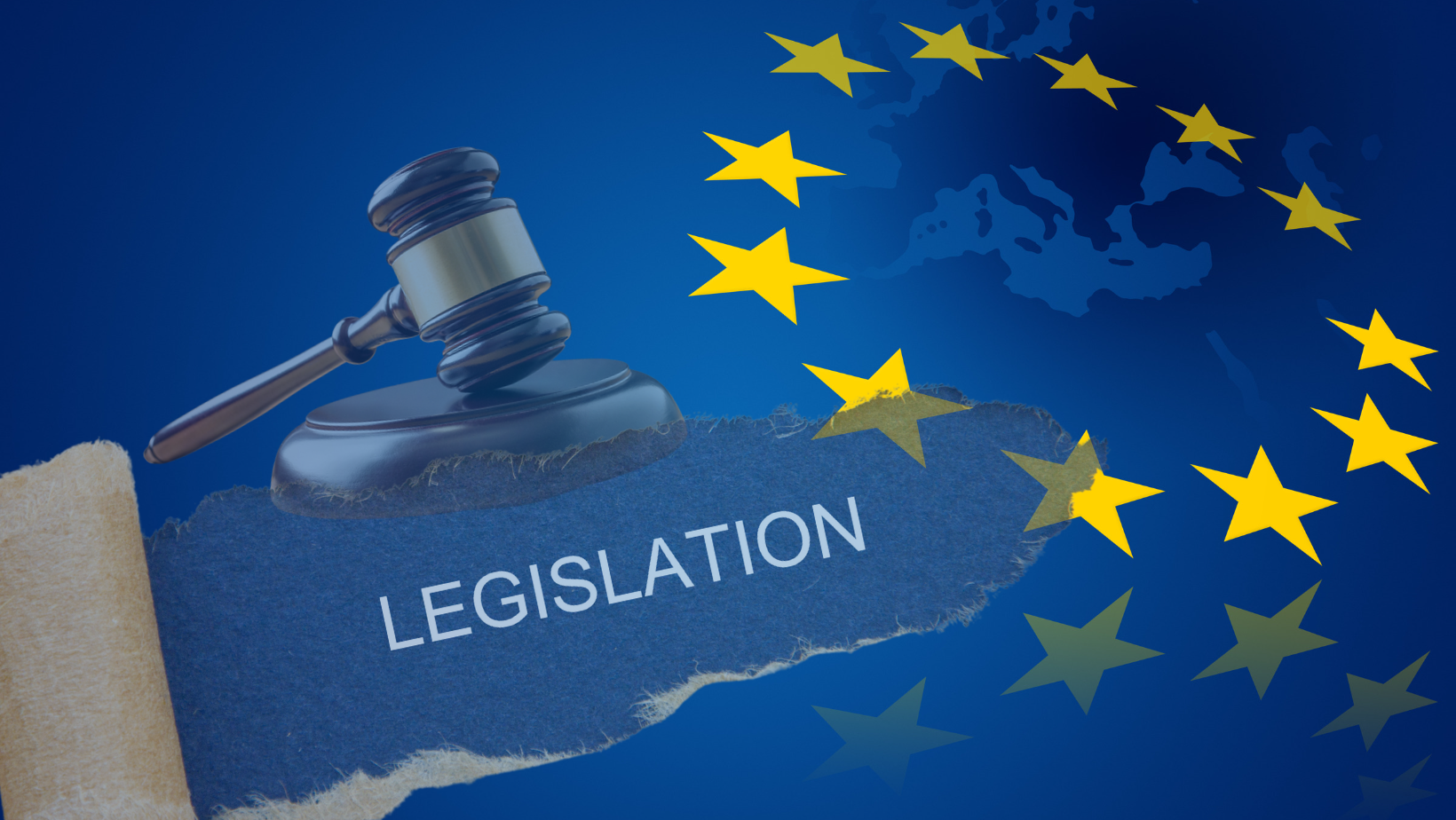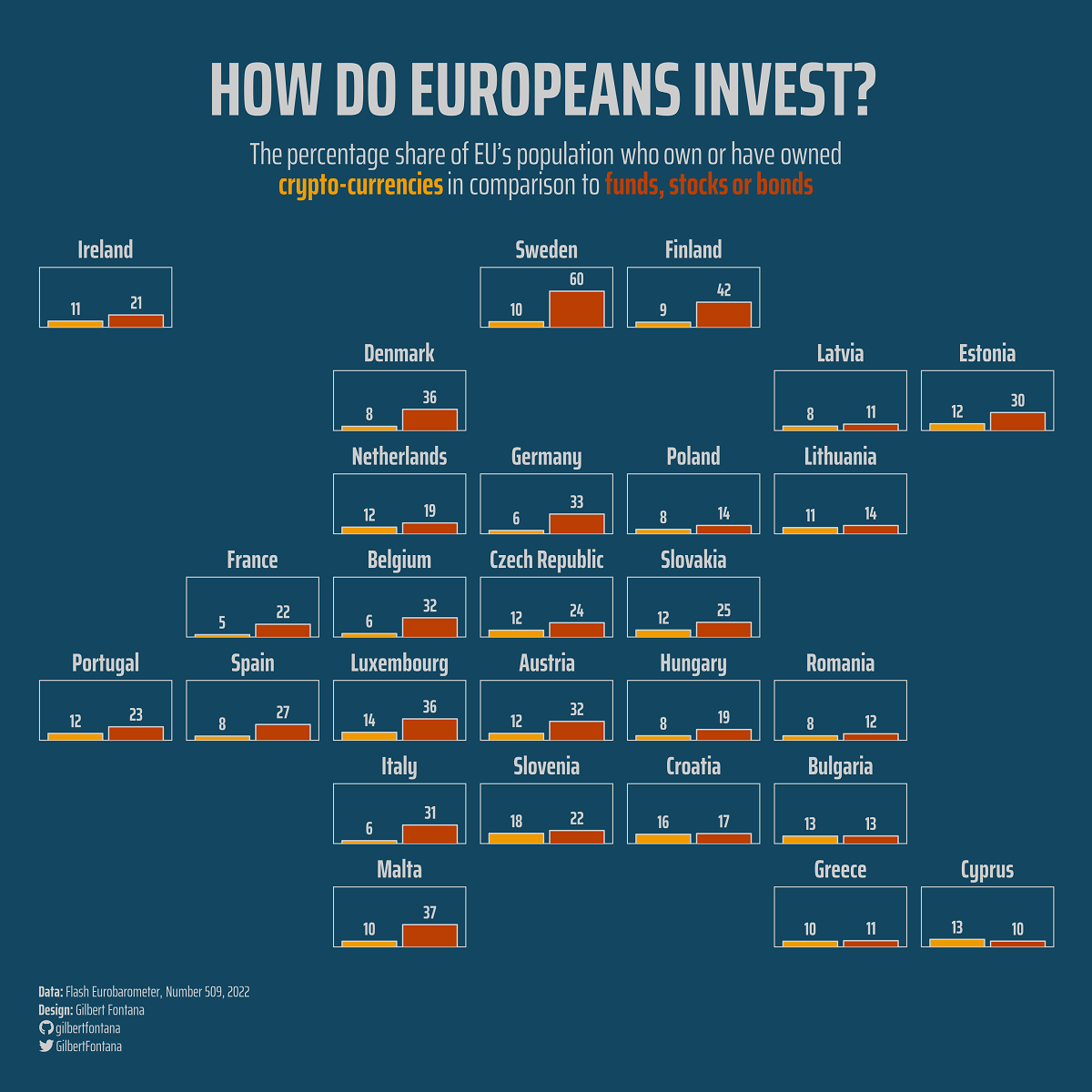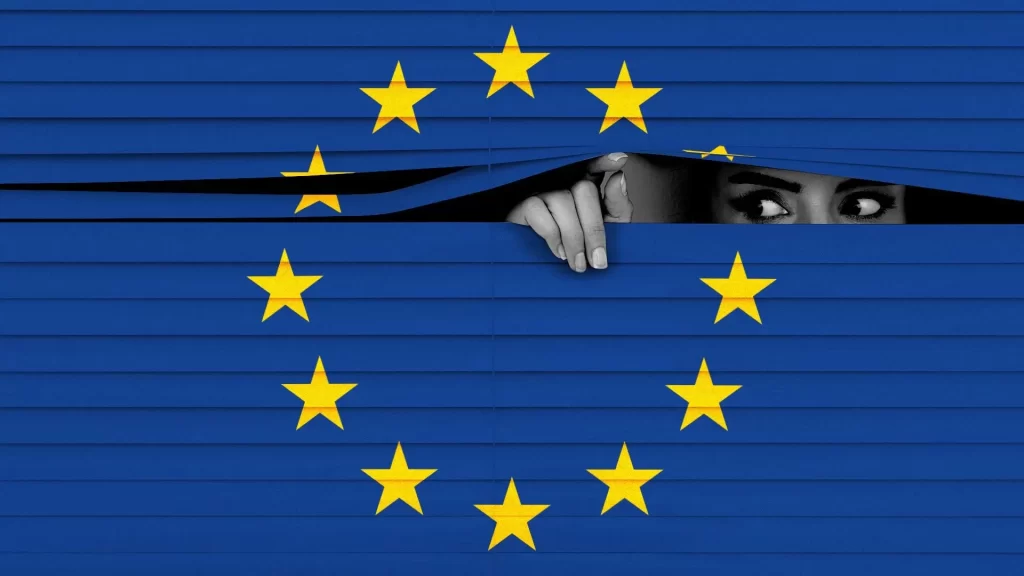Decoding the Future: Will the European Union Ban Crypto Regulations Unpacked
The pressing question on many minds is ‘will the European Union ban crypto?’ The short answer is nuanced. Rather than moving towards an outright ban, the EU is poised to implement the Markets in Crypto-assets (MiCA) regulation. In this article, we delve into the heart of the EU’s directive—balancing innovation in the cryptocurrency sector with the need for regulatory oversight. Read on as we unpack whether current EU policies signal a ban or a harmonized approach to crypto assets.
Key Takeaways
- The EU’s Markets in Crypto-assets (MiCA) regulation, set to be implemented between mid-2024 and early 2025, aims to categorize crypto assets, promote regulatory certainty, environmental sustainability, and innovation while addressing financial stability and monetary policy impacts.
- Crypto Asset Service Providers (CASPs) in the EU must comply with stringent anti-money laundering regulations, including identity verification for large transactions and a ban on anonymous accounts, facing penalties up to 12.5% of annual turnover for noncompliance.
- The EU’s regulatory approach to crypto assets is not about banning but managing risks and ensuring safety and legality, with the new EU regulations having a global influence and setting a precedent for balanced regulation that promotes innovation and security.
Understanding the EU’s Stance on Crypto

As we tread the uncharted territories of the crypto industry, the European Union emerges as a beacon, illuminating the path with clearly defined crypto laws. Central to this regulatory clarity is the Markets in Crypto-assets (MiCA) regulation, a part of the EU’s digital finance package, set for implementation between mid-2024 and early 2025. But, what does MiCA entail?
MiCA, as a legislative initiative, categorizes various types of crypto assets, including digital assets such as Bitcoin. It aims to provide regulatory certainty, promote environmental sustainability, and foster innovation in the crypto market. The EU is also proactive in addressing potential impacts on financial stability and monetary policy that could arise from the widespread use of crypto-assets and distributed ledger technology.
In April 2023, the EU enacted rules that included measures to trace and identify crypto-asset transfers, particularly for transactions exceeding €1,000. This move aims to prevent money laundering, terrorist financing, and other criminal activities associated with anonymous crypto transactions. Such measures, while ensuring the safety of transactions, also promote transparency in the crypto industry.
The EU’s stance on crypto is not only about regulating crypto assets but also about regulating the crypto service providers. Crypto exchanges, crypto firms, and other service providers operate under the watchful eyes of the European Commission, the European Parliament, and EU lawmakers, ensuring the crypto community operates within the set boundaries.
This comprehensive approach to crypto assets regulation, encompassing both crypto assets and service providers, offers a blueprint for other regions grappling with the question of how to regulate this dynamic and rapidly evolving industry.
The Reality of Crypto Assets and Service Providers in the EU
The European Union’s progressive stance on crypto is not without implications for Crypto Asset Service Providers (CASPs). These companies, encompassing crypto exchanges, digital asset businesses, and other crypto firms, face rigorous regulations such as Regulation 2023/1113 and MiCA. So, what do these regulations entail for CASPs?
Under MiCA, crypto exchanges are required to perform identity verification on users transacting 1,000 euros or more through crypto payments as part of their anti money laundering efforts in compliance with anti money laundering laws. Moreover, the regulation prohibits accounts for anonymous users or for privacy coins like Monero. This measure keeps a tight lid on anonymous crypto transactions, thereby discouraging activities such as money laundering and terrorist financing in the realm of crypto services.
The regulatory framework also imposes severe penalties for noncompliance. Firms could face penalties as high as 12.5% of their annual turnover, ensuring strict adherence among CASPs. This effectively discourages any attempts at circumventing the rules, thereby promoting a transparent and secure environment for crypto transactions.
Beyond the enforcement of stringent compliance requirements, the EU’s regulatory framework also seeks to foster growth in the crypto industry. The European Parliament and Council’s provisional agreement on crypto, for instance, includes safety measures like the 1:1 rule for asset backing and stipulates an EU presence requirement for crypto-assets issuance. Such measures aim to enhance consumer protection while promoting sectoral growth.
The EU framework includes the following measures to promote a robust and responsible crypto sector in Europe:
- Implementing stricter regulations on crypto exchanges and wallet providers
- Requiring service providers in the crypto industry to disclose energy usage
- Addressing the significant energy consumption of cryptocurrencies
These measures collectively contribute to a robust and responsible crypto sector in Europe.
Misconceptions About Crypto Bans and Restrictions

As we navigate the world of EU crypto regulations, it’s crucial to address a few misconceptions. There’s a prevailing notion that the EU’s crypto laws are geared towards banning or restricting crypto assets and services. However, this is far from the truth.
The EU’s MiCA regulation, for instance, focuses more on risk management and legal clarity for crypto-assets instead of imposing a blanket ban. Instead of outright prohibition, new EU regulations impose conditions on transactions with self-custodial wallets and peer-to-peer transfers.
The aim is not to stifle innovation or restrict freedom, but rather to manage risks and ensure the safety and legality of crypto transactions. Increased EU regulation targets enhanced scrutiny over privacy-focused crypto assets and anonymous accounts, not a total elimination of privacy.
The Ripple Effect: EU Crypto Regulations and Global Trends
The EU’s crypto regulations are not confined to its borders. They cast a ripple effect, influencing global cryptocurrency markets and legislation. For instance, a bipartisan delegation from the U.S. Congress visited Brussels to seek regulatory tips, indicating that the EU’s regulatory framework could influence other countries’ legislation on cryptocurrencies.
The EU’s comprehensive regulatory measures for cryptocurrencies have significantly influenced local and global cryptocurrency markets, promoting oversight and transparency. The EU’s approach offers a model for other regions looking for ways to regulate the burgeoning crypto industry without stifling innovation.
Notwithstanding the increased security and transparency, the heavyweight regulations have led some startups to relocate outside of the EU in search of more favorable conditions. Such moves highlight the global nature of the crypto industry and the need for a balanced regulatory approach that fosters both innovation and security.
The European Banking Authority’s role in supervising stablecoins and the mandatory EU base for issuers showcases the stringent oversight being applied in the EU crypto space. This exemplifies the EU’s commitment to ensuring that the crypto industry operates within the bounds of the law, promoting trust and security in the sector.
Despite the challenges, the EU’s regulatory framework has set a global precedent for crypto regulation, demonstrating how governance can keep pace with technological innovation to ensure a balanced and secure crypto industry.
Looking Ahead: The Future of Crypto Regulation in the EU

As we gaze into the future, what does it hold for crypto regulation in the European Union? The new regulations, adopted by the council on 16 May 2023, offer some insights. They were officially signed into law on 31 May 2023 and consequently published in the Official Journal on 9 June 2023.
The cryptocurrency industry is granted a three-year period to adapt to these new EU regulations before they are fully enforced. This adaptation period offers crypto firms a window to adjust their operations to the new regulatory framework, ensuring a smooth transition.
The EU Parliament has also expressed a commitment to tackling tax evasion through improved coordination on the taxation of crypto-assets. This is a clear indication that the EU is advocating for fair and effective tax practices in the crypto industry.
As we look ahead, it’s clear that the EU is committed to fostering a crypto ecosystem that is secure, transparent, and conducive to growth. The future of crypto regulation in the EU is designed to support the dynamic nature of this industry while ensuring consumer protection and financial stability.
Summary
In a nutshell, the European Union’s approach to crypto regulation is comprehensive, balanced, and forward-thinking. The EU has taken strides to provide a robust regulatory framework for crypto assets and service providers, dispelling misconceptions about bans or restrictions, influencing global regulatory trends, and charting a clear course for the future of crypto regulation in the region. It’s a fascinating journey, one that promises to shape the trajectory of the global crypto industry.
Frequently Asked Questions
What is the MiCA regulation?
The MiCA regulation is part of the EU’s digital finance package, aimed at balancing innovation, financial stability, and consumer protection in the crypto-assets market.
What are the implications of EU regulations for Crypto-Asset Service Providers (CASPs)?
EU regulations such as Regulation 2023/1113 and MiCA require Crypto-Asset Service Providers (CASPs) to adhere to transparency and accountability measures. This has implications for the operations of CASPs within the EU.
Are the EU’s crypto regulations aimed at banning crypto?
No, the EU’s crypto regulations are not aimed at banning crypto. The focus is on risk management and legal clarity rather than implementing a blanket ban.
How have EU’s crypto regulations influenced global trends?
EU’s crypto regulations have had a significant impact on global cryptocurrency trends, leading to increased oversight and transparency in the market.
What does the future hold for crypto regulation in the EU?
The future of crypto regulation in the EU includes a three-year adaptation period and a commitment to tackling tax evasion, providing a clearer roadmap for the industry’s regulatory environment.

